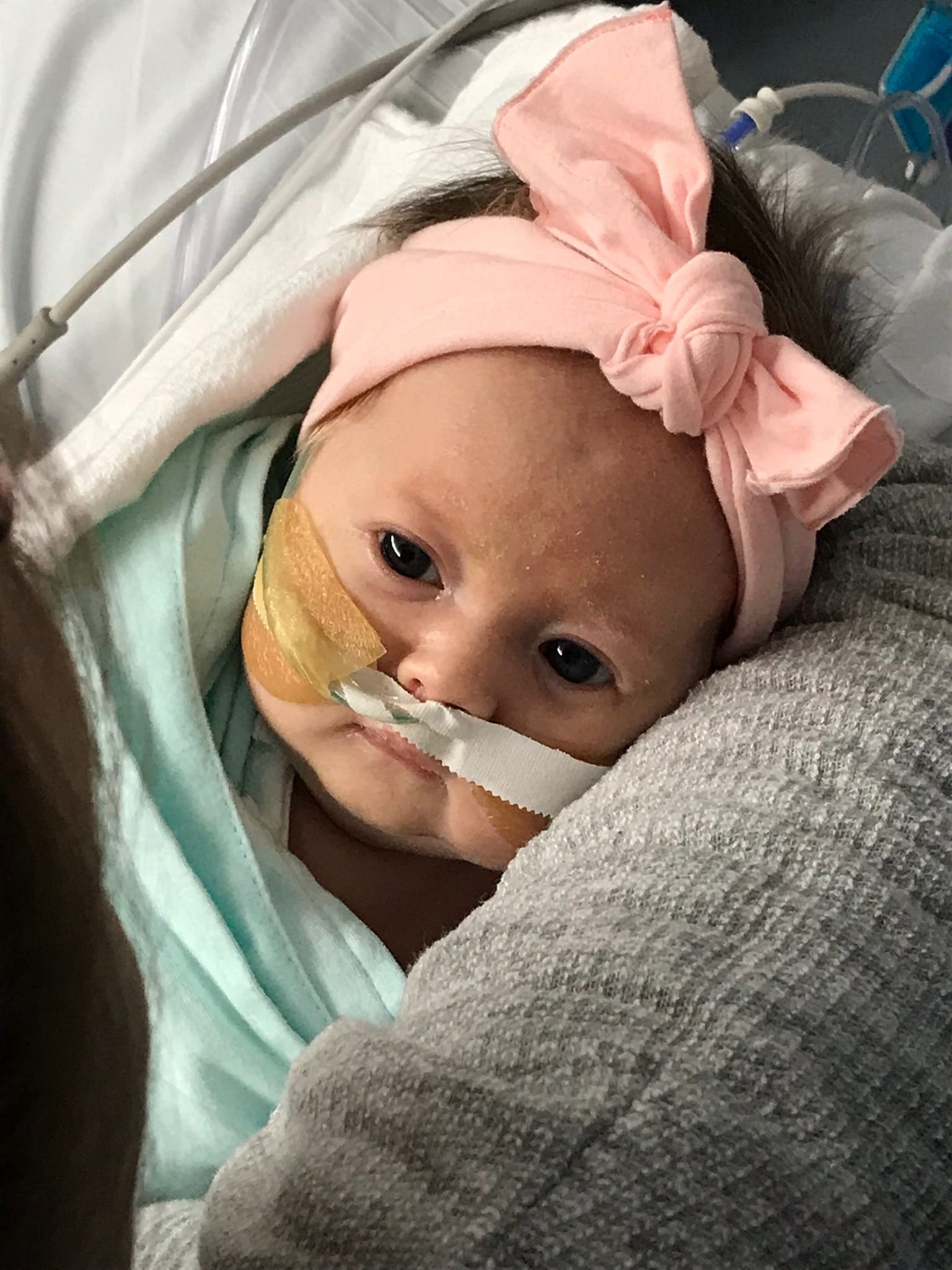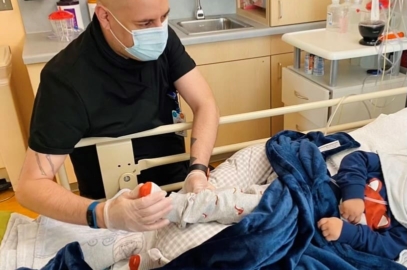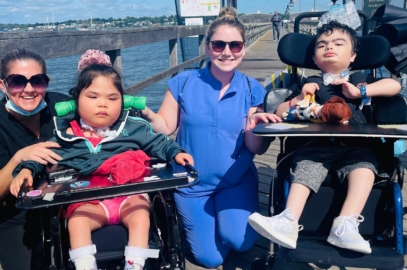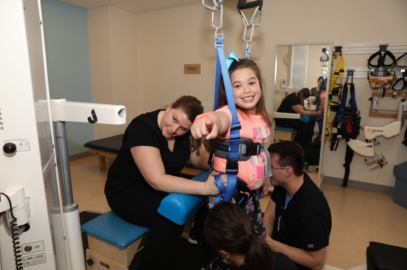October 29, 2019
When you think of Home Care, what is the scene that comes to mind? Most people picture an elderly senior receiving a visit from a home care nurse who might take their blood pressure, check their vital signs and review their medications. Not many people think of home visits conducted by Speech Therapists, particularly those who care for children and young adults with feeding disorders.
These are exactly the types of services and care the therapists and clinicians at St. Mary’s Home Care deliver every day, and in doing so, help keep kids safe at home while they continue to wean off feeding tubes and progressively gain the necessary weight and positive eating behaviors to keep them healthy.
St. Mary’s Home Care provides a unique, one-of-a-kind Speech Therapy program that allows children and young adults to remain at home while addressing their feeding challenges. The program includes: comprehensive oral motor and feeding evaluations, medication management, environmental and diet assessments, and emergency management when symptoms of aspiration and other feeding-related issues might require emergency treatment. Recently, St. Mary’s also added the use of Remote Patient Monitoring (RPM) through Telehealth to further enhance the support it provides to families caring for children who require Speech Therapy for feeding issues.
Lindsay Block is a Masters prepared, Pediatric Speech Pathologist who has worked for St. Mary’s Home Care for two years. She began her career providing speech therapy services in an nursing home but found she missed working with children and so she transitioned to St. Mary’s Home Care. Lindsay says she is honored that families welcome her into their homes, and she is particularly gratified when she is able to help a child grow and progress. That was the case with one of her youngest patients, two year old Lily Lingner.
Lily was born with gastroschisis, a rare abdominal wall defect that occurs in only 1 of every 2500 children born in the United States. The disorder causes the digestive organs to form outside of the abdomen and prevents the ability to eat by mouth. Lily spent the first months of her life in specialized children’s hospitals in both Philadelphia and New York and was then referred to St. Mary’s Hospital’s Inpatient Intensive Feeding program where she spent another three months before becoming strong enough to be discharged with a referral for further treatment at home. Lily was eleven months old and still solely being fed through the gastro tube in her stomach.
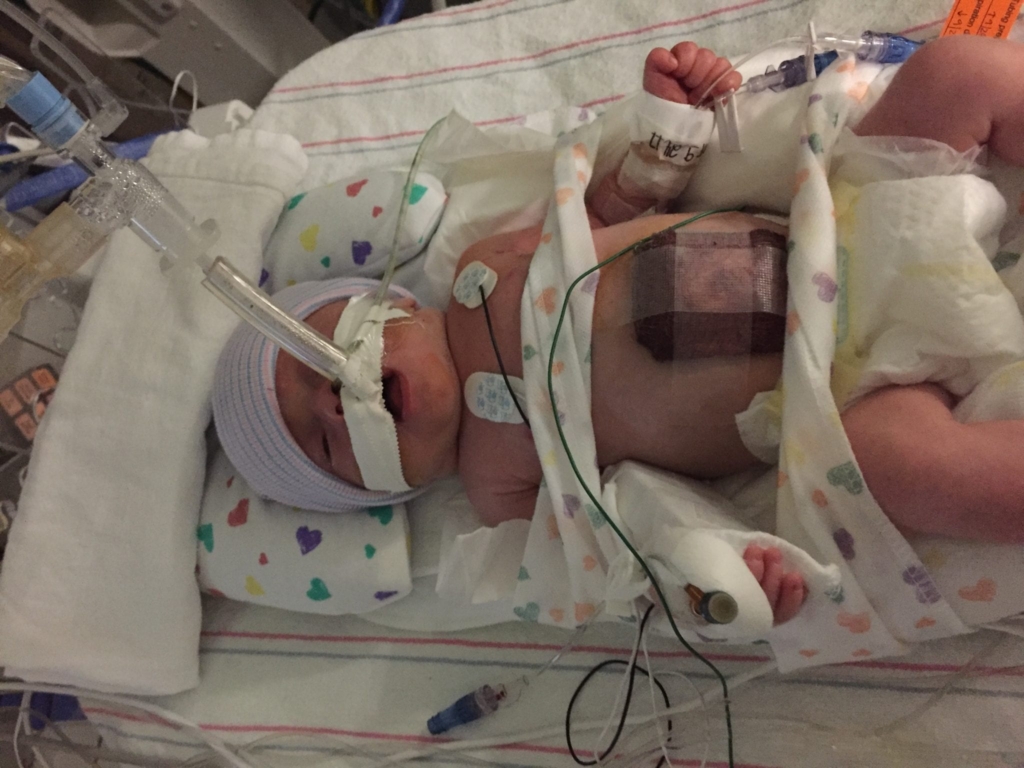
Lily’s mom Meghan was determined to have Lily continue to receive the intensive feeding therapy she had received in the acute and inpatient facilities so that Lily would continue to make progress. She was referred to an Early Intervention (EI) program for speech therapy services but the EI program was not able to provide the intensive, specific feeding focused therapy Lily needed and that’s when she was referred to St. Mary’s Home Care for Speech Therapy.
At the start of her care in August, 2018, Lily weighed 16 pounds, 12 ounces. It’s important to note that at this point, Lily was still not able to eat any food by mouth. Lindsay started working with her five times a week, slowly gaining her trust while she introduced Lily to the experience of eating food by mouth. Lindsay also helped Lily’s caregivers by suggesting helpful changes to reduce distractions, and showing them how to encourage Lily to eat, as well as how to increase the quantity and variety of food types she would eat.
In December, 2018 Lindsay also began to use a specially designed St. Mary’s Telehealth Feeding platform. Lindsay was able to use a company issued IPAD and the platform to record specifics related to Lily’s food intake, including data on textures, types of food, and Lily’s acceptance rate of foods she liked and those she disliked.
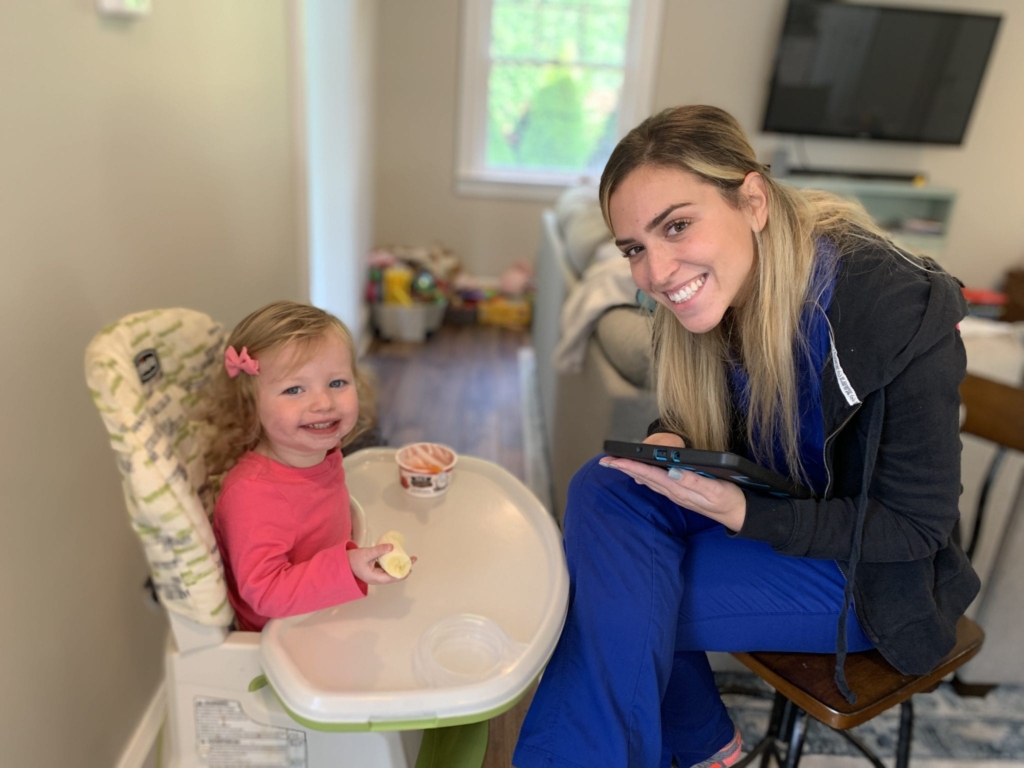
By the end of December, Lindsay was able to assist in increasing Lily’s overall intake which then lead Lily’s physician to reduce her tube feeds. By February, 2019, Lily was able to eat regular food, started gaining weight, and was fully weaned off her feeding tube. By July of this year she weighed 22 pounds and was able to have her feeding tube completely removed.
When asked about the use of the new technology and how it’s helped both Lindsay and Lily, Lindsay is quick to share the benefits. “As a Speech Pathologist, the platform has allowed me to track patient status, appropriately document amounts of food consumed during sessions and observe patterns of both food intake and negative behaviors associated with particular food items. It’s a more precise way of documenting and reporting. Since I am able to work in conjunction with Lily’s mother and father and additional caregivers, we have a protocol in place that has allowed Lily to have consistency in her feeding experience.”
Since educating families is a critical component to keeping children safely at home, the Home Care Program is expanding use of the platform to connect with caregivers through video visits so that home care therapists can remotely watch and support caregivers when they are on their own at home conducting feeding sessions. The platform also provides a way for caregivers and therapists to stay in touch in between visits through the use of “push notification” reminders and text messaging; essentially allowing caregivers to reach out at the touch of a button.
When asked what having a Speech Pathologist available to make home visits meant to her, Lily’s mom shared.
“I was so happy to find St. Mary’s Home Care and our wonderful Speech Therapist, Lindsay. Lily was able to continue her care at home, surrounded by her father, brother and other loving family members. Her therapy started the same month she came home from St. Mary’s Hospital. I was able to sit side-by-side with Lindsay and learn skills on how to approach feedings with Lily. Lindsay helped me develop a meal plan, menus, and introduced me to helpful technology to keep track of Lily’s progress. I don’t know what I would have done without home care services, it is scary to think about the lack of other resources available, especially when families are under the stress of caring for a sick child with other siblings at home and work responsibilities. Having the Speech Therapist come to the house eased Lily’s transition home, helped her make continual progress, and certainly reduced our stress and anxiety.”
So maybe the next time you hear the term “Home Care” you will picture a scene that includes patients of every age group from newborns to seniors, receiving all types of services, including those from experienced pediatric Speech Pathologists like Lindsay!
Contact for additional information: Christine Duffy, 718-281-8752, cduffy@stmaryskids.org
